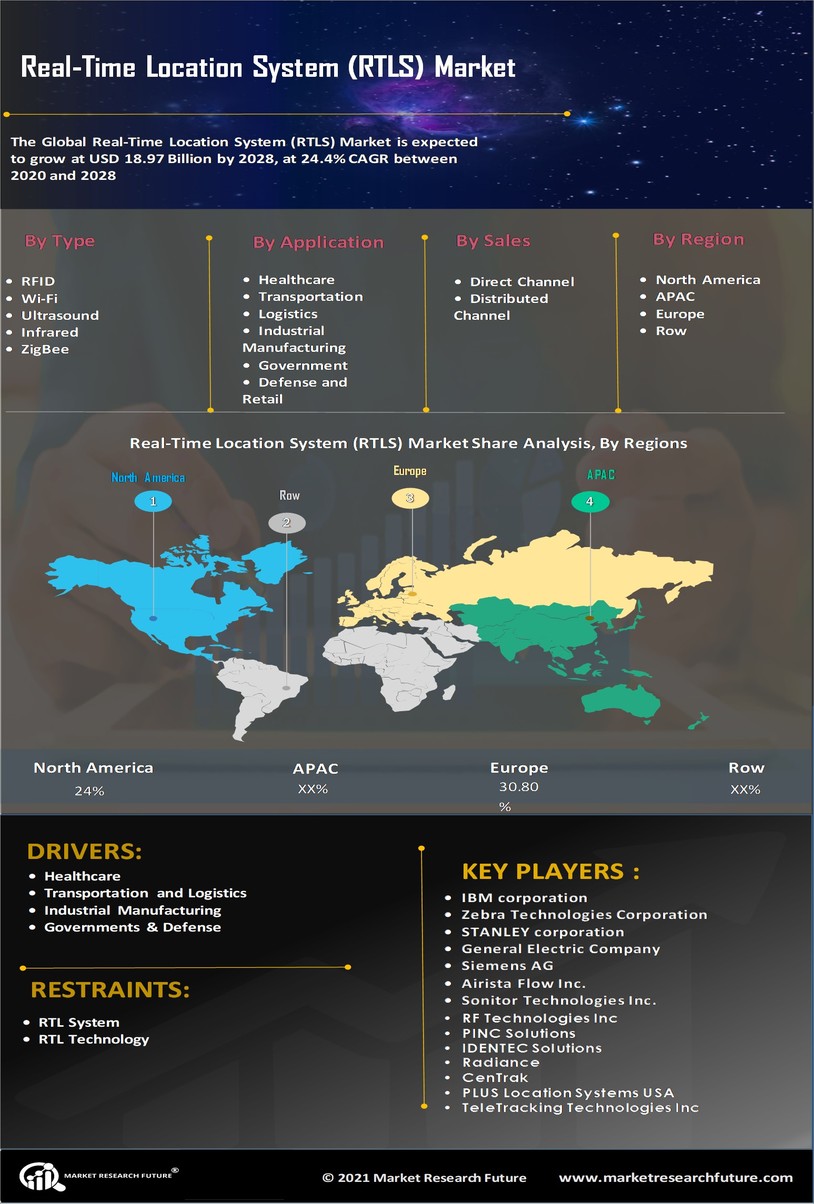Advancements in Technology
Technological advancements play a pivotal role in shaping the Real-Time Location System Market. Innovations in GPS, RFID, and Bluetooth technologies have significantly improved the accuracy and reliability of location tracking systems. These advancements enable organizations to implement more sophisticated solutions that cater to their specific needs. For instance, the integration of machine learning algorithms allows for predictive analytics, enhancing decision-making processes. The market is witnessing a shift towards more user-friendly interfaces and mobile applications, making it easier for businesses to adopt these systems. As technology continues to evolve, the Real-Time Location System Market is likely to see an influx of new players and solutions, further driving competition and innovation. This dynamic environment suggests that companies must stay abreast of technological trends to remain relevant and competitive.
Rising Demand in Retail and E-commerce
The Real-Time Location System Market is witnessing a notable increase in demand from the retail and e-commerce sectors. As these industries continue to expand, the need for efficient inventory management and customer experience enhancement becomes paramount. Real-time location systems enable retailers to track inventory levels accurately and optimize supply chain operations, which is essential for meeting consumer expectations. Recent market analyses suggest that the retail segment is expected to grow at a rate of approximately 15% annually over the next few years. This growth is driven by the increasing adoption of omnichannel strategies, where retailers seek to provide seamless shopping experiences across various platforms. Consequently, the Real-Time Location System Market is likely to benefit from this trend, as businesses invest in technologies that enhance their operational capabilities and customer satisfaction.
Increased Focus on Operational Efficiency
The Real-Time Location System Market is significantly influenced by the growing emphasis on operational efficiency among organizations. Companies are increasingly seeking ways to streamline their operations and reduce costs, which has led to a heightened interest in real-time location systems. By providing accurate and timely data on asset movements, these systems enable businesses to make informed decisions that enhance productivity. Recent studies indicate that organizations implementing real-time location systems can achieve up to a 30% reduction in operational costs. This focus on efficiency is particularly evident in sectors such as logistics and manufacturing, where the ability to track assets in real-time can lead to substantial improvements in workflow and resource allocation. As businesses continue to prioritize efficiency, the demand for real-time location solutions is expected to rise, further propelling the Real-Time Location System Market.
Regulatory Compliance and Safety Standards
The Real-Time Location System Market is also driven by the need for regulatory compliance and adherence to safety standards. Various industries, including healthcare and transportation, are subject to stringent regulations that mandate the tracking and monitoring of assets and personnel. Real-time location systems provide a viable solution for organizations to meet these compliance requirements effectively. For instance, in healthcare, tracking medical equipment and personnel is crucial for ensuring patient safety and operational efficiency. The increasing focus on compliance is likely to propel the adoption of real-time location systems, as organizations seek to avoid penalties and enhance their reputation. Furthermore, as regulations evolve, the Real-Time Location System Market may witness a shift towards more specialized solutions tailored to meet specific compliance needs.
Growing Demand for Asset Tracking Solutions
The Real-Time Location System Market is experiencing a surge in demand for asset tracking solutions across various sectors. Organizations are increasingly recognizing the value of real-time visibility into their assets, which enhances operational efficiency and reduces losses. According to recent data, the asset tracking segment is projected to grow at a compound annual growth rate of approximately 20% over the next five years. This growth is driven by the need for businesses to optimize their supply chains and improve inventory management. As companies seek to minimize downtime and enhance productivity, the adoption of real-time location systems becomes essential. Furthermore, industries such as manufacturing, logistics, and retail are particularly focused on leveraging these technologies to gain a competitive edge, thereby propelling the Real-Time Location System Market forward.


















Leave a Comment